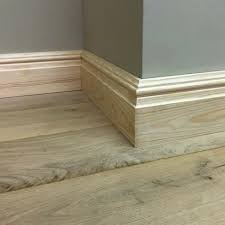Yes, it is absolutely possible to overheat wood with a microwave—but only under specific conditions, and with consequences that range from minor defects to serious structural or safety risks. While microwave technology is celebrated for its efficiency in drying and pest control, like any powerful tool, it must be handled with precision. Overheating can occur when wood is exposed to excessive energy levels, uneven moisture content, or poor process control.
Why Overheating Happens
Microwaves work by exciting water molecules inside the wood, which generate heat through rapid vibration. This heat evaporates moisture, drying the wood from the inside out. However, if:
-
Microwave power is too high,
-
Exposure time is too long, or
-
Wood has uneven moisture distribution,
the internal temperature of the wood can rise above safe levels—often surpassing 100°C or even 150°C. At these temperatures, several problems can occur.
What Happens When Wood Overheats?
-
Cracking and Splitting
Rapid heating can create thermal stress. If the interior of the wood expands or dries faster than the surface, pressure builds up and leads to checking (surface cracks) or splits through the grain. This is especially common in thick or resinous woods.Visit Online shashel for More details. -
Burning or Charring
If wood is exposed to excessive microwave energy without adequate moisture to dissipate heat, the temperature can climb to the point of pyrolysis—thermal decomposition of organic material. This results in scorch marks, smoke, or even ignition. While rare in controlled systems, it’s a real risk in DIY or poorly calibrated equipment. -
Loss of Structural Integrity
Overheated wood can become brittle or lose its tensile strength. The breakdown of natural polymers (like cellulose and hemicellulose) at high heat can make the wood more fragile, especially if it’s intended for load-bearing structures or furniture. -
Discoloration and Deformation
Excess heat can darken or unevenly stain wood, especially lighter-colored species like pine or spruce. This is a cosmetic issue for many, but in high-end applications like cabinetry or flooring, it may ruin the piece.
Safe Heating Thresholds
Most professional microwave wood treatment systems aim to heat wood to 60°C to 80°C—enough to kill pests or remove moisture, but below the danger zone for burning or degradation. Temperatures above 120°C start to alter wood chemistry, and anything beyond 180°C enters thermal modification or combustion territory.
How to Prevent Overheating
-
Use a controlled microwave system: Industrial and professional-grade machines come with sensors, timers, and thermal feedback loops that adjust power levels to prevent overheating.
-
Monitor moisture content: Dry wood heats much faster than wet wood. Uniform pre-conditioning helps avoid hot spots.
-
Rotate or reposition wood: This helps distribute energy more evenly, especially in batch treatments.
-
Avoid DIY microwave use for thick wood: Household microwaves lack precision and can’t manage heating depth, making them dangerous for anything beyond tiny pieces.
In Conclusion
Microwave technology offers a fast, clean, and effective method for drying and treating wood—but yes, overheating is possible if it’s misused. With the right controls, microwave systems can safely process wood without damage, but unregulated exposure can lead to cracks, burns, discoloration, or even fire. Like any heat-based process, precision is the key to unlocking its benefits without compromising the wood’s integrity.
